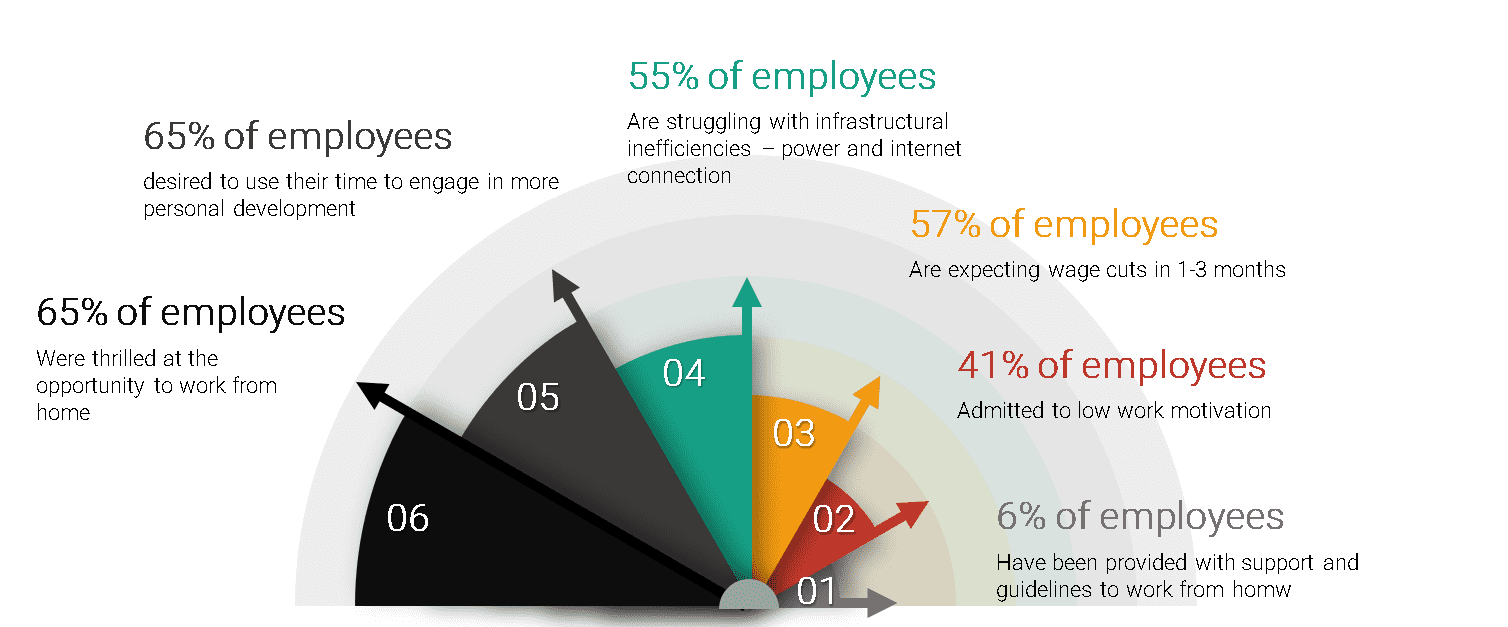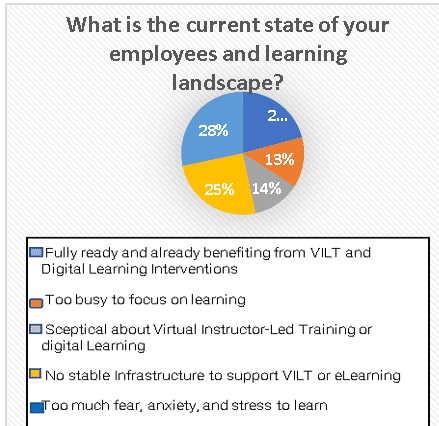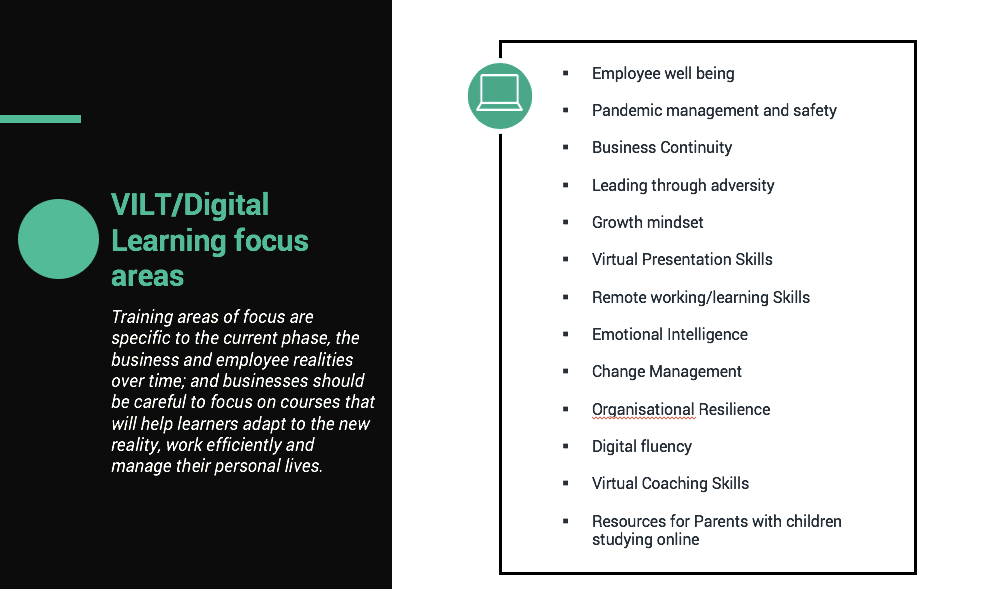The preceding months brought with them an unprecedented challenge to our personal and professional lives. In the corporate context, these challenging times are likely to test the empathy and preparedness of organisations across the globe in dealing with an unplanned conundrum of balancing talent development, employee well-being, and productivity. Organisations that can navigate the implications of COVID-19 and stay ahead of the curve are likely to emerge more successful than the others.
Many argue that the best competing companies have evolved methods of attaining this mix, often referred to as ‘work-life balance’, and several industry metrics have compiled a list of organisations that achieve this better than the others. However, the nature of COVID-19 pandemic, as with any crisis of near similar scale, varies differently. It is far more personal and carries a fear of the unknown. It doesn’t just impact companies or traditional business operations but also the global community, forcing everyone to adapt.
Key business perspectives from COVID-19
Businesses wake up daily to more realities knocking. Leaders around the globe are now navigating a broad range of interrelated issues that span from keeping their employees and customers safe to shoring-up cash and liquidity, reorienting operations, and navigating complicated government support programs. It is important to test the robustness of performance management and talent evaluation strategies, existing information technology and communications infrastructure during this crisis. Organisations around the world now find themselves having to immediately invest in their current employees to help support them in ways they never imagined before now.
A survey carried out during a live Webinar on “COVID Realities for Talent Development” revealed how these realities had impacted the Talent Development budgets of many organisations:
As shown above, 93% of respondents revealed that their talent development budget has either been cancelled, slashed, or delayed. This goes a long way to show that staff development is not seen as a priority for most organisations at this time. Only 7% see Learning as a primary driver of employee engagement and experience during these perilous times. To compete favourably, organisations need to move from seeing talent development as an option, but rather as a necessity. If employees are not well equipped, you cannot blame them when they do not perform optimally.
A global survey by Gallup reveals that organisations that make a strategic investment in employee development during challenging times report 11% greater profitability and are twice as likely to retain their employees. This, however, is in stark contrast to our local survey indices which clearly show that 93% of businesses do not see staff development as a priority currently.
People Perspectives
The people perspectives stem from a much wider scope that focuses on intimate discoveries that are affecting delivery and business sustainability.
How is the pandemic affecting employees mentally and physically? Following a survey we conducted, results showed that most employees are struggling with fears of being laid off, furlough, pilling bills, and many others. Employees who are sure about job safety fear for their health when physical office work resumes. These personal worries have had a significant impact on their reactions/readiness to learning.
Another survey conducted during the live webinar revealed further insight into the current realities for employees:
This poll showed that a reasonable number of are employees combating fear, anxiety or stress, and this has hampered their desire to learn. Some employees affirmed that they are busy with other organisational activities deterring them from learning. Another group revealed their scepticism about Virtual Instructor Lead Training (VILT) or e-Learning; while the last group stated that they have no stable infrastructure to support VILT or eLearning.
For Talent Development (TD) initiatives to succeed, they must put into context the above realities. TD professionals should be at the forefront of creating awareness by developing interventions that address people needs now.
Navigating the Talent Development Terrain during COVID-19
The above statistics are indeed a wake-up call for Talent Development (TD) and HR professionals around the globe. People at work need support, require flexibility, and are hungry for new skills—skills to cope, skills to stay productive, and beyond.
This is, therefore, an excellent time for TD professionals to be agile, change the narrative and let their voices be heard. Executives across the globe are asking TD leaders to have a seat at the table—a seat that previously felt unattainable. This is a great opportunity for TD professionals to stay connected with the business, enhance the relationship currency and make a great impact.
The disruption has come upon us so rapidly, and the future of work as we envisaged is here. The next question yearning for an answer is: How can organisations survive this new normal?
3 actionable steps TD professionals can take are:
1. Devising an effective communication strategy
One major issue that most businesses have battled with during this period is having a poor communication strategy– what to say, when to say it, and how. As the pandemic evolves, it is time to start having new conversations and shift focus to efforts that support a return to work for employees, new ways of work, stabilising the new environment and planning what to do next.
2. Strategic growth as a tool for recovery
While strategic growth has not been highly prioritised, now is the time to look to it as the strongest tool for recovery. Development, in this case, is beyond the regular face of learning about work but now about learning how to work and developing skills to sustain and transform the business.
3. Implementing a new approach to talent development
The scale and spread of COVID has defined a new norm. Companies must swiftly prepare and enable a resilient, flexible workforce to deliver through the different expected and unforeseen business cycles. There is a need for Workforce and Talent Segmentation, redefining capabilities, fostering connectivity, creating digital intimacy, shaping behaviour as a critical skill, and driving interconnectedness in the organisation
What will you do tomorrow?
We have dimensioned this in 3 buckets, namely: The strategy to adopt, governance to put in place, and the measurement strategy. This is illustrated below.
What specific TD interventions should you focus on now?
Our research highlights some targeted interventions below.
Getting employees engaged during this period is very crucial. TD professionals need to explore virtual instructor-led training and online learning platforms that offer quick, bite-sized content that allows learners to consume learning within 30-45mins for continuous development. In determining the interventions to adopt, you do not need to arrive at what to focus on all by yourself. You can conduct a quick engagement survey to get a pulse of the critical themes and topic areas of your employees during this period and introduce reliable digital learning platforms to addresses those needs.
COVID-19 has brought a lot of realities to businesses, individuals, and society in many ways. The current situation in some ways provides an opportunity for companies to plan for future unpredictable challenges – whether economic crises or pandemics – and start designing resilient socio-technical systems and tools to enable them to thrive in an uncertain and changing world.
Phillips Consulting is currently helping several organisations make the needed transitions to VILT and Digital Learning. We will be happy to engage you too.
Written by:
 |
 |
 |
| Victoria Debrah
Business Consultant |
Edith Egbele
Analyst |
Paul Ayim
Senior Partner |





